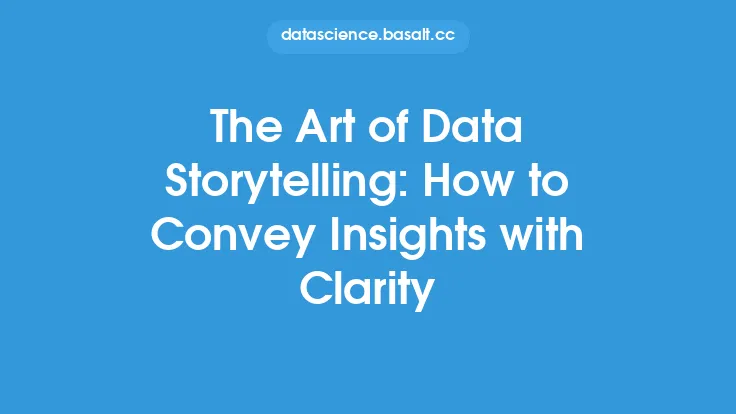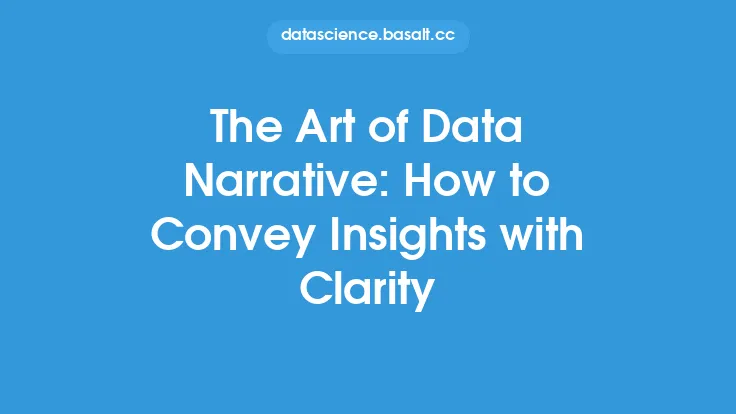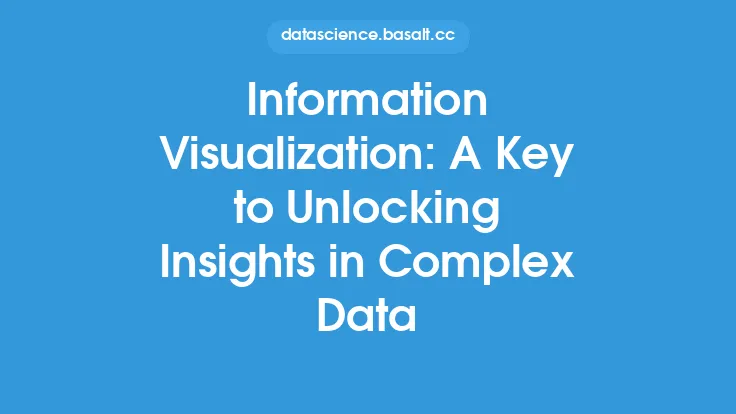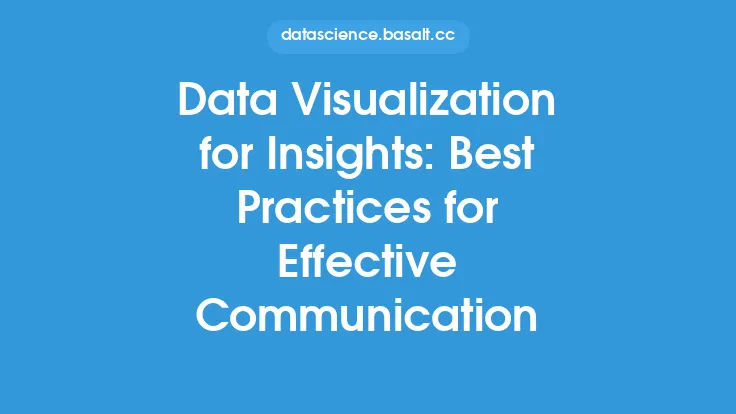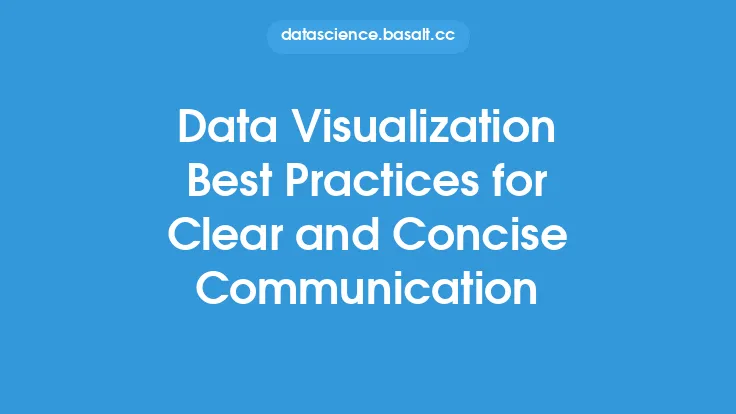When dealing with complex data insights, one of the most significant challenges is communicating them in a way that is easy for others to understand. This is particularly important in the field of data science, where insights are often derived from large and intricate datasets. The ability to convey these insights in a clear and concise manner is crucial for making informed decisions, driving business outcomes, and fostering collaboration among stakeholders. In this article, we will explore the principles and techniques for communicating complex data insights with simplicity and clarity.
Understanding the Audience
To effectively communicate complex data insights, it is essential to understand the audience. Different stakeholders may have varying levels of technical expertise, and it is crucial to tailor the communication approach to their needs. For instance, when presenting to a non-technical audience, it may be necessary to avoid using technical jargon and focus on the key findings and implications. On the other hand, when presenting to a technical audience, it may be possible to delve deeper into the details of the analysis and methodology. Understanding the audience's needs and preferences is critical for creating a clear and engaging narrative.
Simplifying Complex Concepts
Simplifying complex concepts is a critical aspect of communicating data insights. This can be achieved through the use of analogies, metaphors, and storytelling techniques. For example, instead of explaining a complex statistical model in technical terms, it may be more effective to use an analogy that illustrates the underlying concept. Additionally, using visualizations and graphics can help to simplify complex data and make it more accessible to a wider audience. By breaking down complex concepts into smaller, more manageable pieces, it is possible to create a clear and concise narrative that resonates with the audience.
The Role of Storytelling in Communication
Storytelling is a powerful tool for communicating complex data insights. By creating a narrative arc that includes a setup, a confrontation, and a resolution, it is possible to engage the audience and convey the key findings in a more memorable way. Storytelling also allows for the use of emotional appeals and vivid imagery, which can help to make the insights more relatable and impactful. Furthermore, storytelling can be used to create a sense of context and relevance, which is essential for making the insights more meaningful and actionable.
Data Visualization Techniques
Data visualization is a critical component of communicating complex data insights. By using visualizations such as charts, graphs, and heat maps, it is possible to convey complex data in a more intuitive and accessible way. There are several data visualization techniques that can be used to communicate complex data insights, including:
- Using color and texture to highlight key trends and patterns
- Creating interactive visualizations that allow the audience to explore the data in more detail
- Using animation and motion graphics to illustrate complex concepts and relationships
- Creating custom visualizations that are tailored to the specific needs and preferences of the audience
Best Practices for Communication
There are several best practices that can be used to communicate complex data insights with simplicity and clarity. These include:
- Using clear and concise language that avoids technical jargon and complexity
- Focusing on the key findings and implications, rather than getting bogged down in technical details
- Using visualizations and graphics to illustrate complex concepts and relationships
- Creating a narrative arc that includes a setup, a confrontation, and a resolution
- Using storytelling techniques to create a sense of context and relevance
- Tailoring the communication approach to the specific needs and preferences of the audience
Technical Considerations
When communicating complex data insights, there are several technical considerations that must be taken into account. These include:
- Ensuring that the data is accurate and reliable, and that the insights are based on sound methodology and analysis
- Using appropriate statistical and machine learning techniques to analyze the data and derive insights
- Considering the limitations and biases of the data, and being transparent about these limitations
- Using data visualization tools and software to create interactive and dynamic visualizations
- Ensuring that the communication approach is scalable and flexible, and can be adapted to different audiences and contexts.
Conclusion
Communicating complex data insights with simplicity and clarity is a critical aspect of data science and analytics. By understanding the audience, simplifying complex concepts, using storytelling techniques, and leveraging data visualization, it is possible to create a clear and engaging narrative that resonates with the audience. Additionally, by following best practices and considering technical considerations, it is possible to ensure that the insights are accurate, reliable, and actionable. By mastering the art of communicating complex data insights, organizations can unlock the full potential of their data and drive business outcomes that are informed by data-driven insights.
